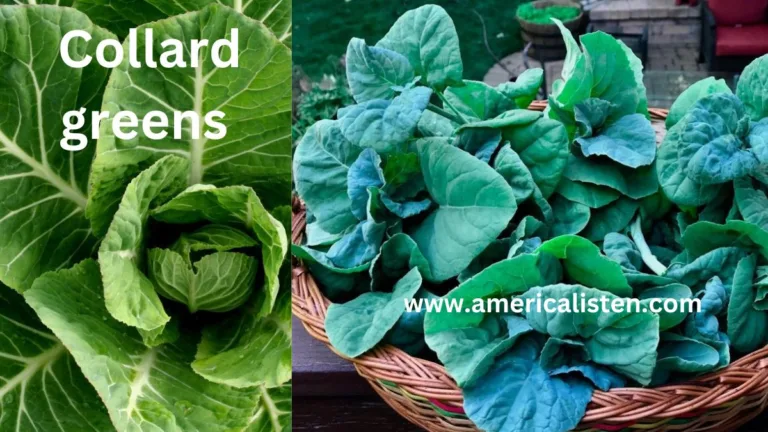“Peas-licious Recipes for Lunch and Dinner! Uncover the Hidden Health Benefits and Shocking Secrets of Peas!”
Peas, those unassuming little green gems, have been gracing our plates and palates for centuries. These modest legumes, often relegated to the sidelines as a side dish or garnish, have a rich history and an even richer nutritional profile that deserves our attention. In this article, we’ll delve into the world of peas, from their origins and varieties to their incredible health benefits and versatile culinary uses.
A Brief History
Peas, scientifically known as Pisum sativum, are believed to have originated in the Mediterranean and the Middle East around 7,000 years ago. Their cultivation quickly spread across Europe and Asia, becoming a staple crop in many ancient civilizations, including the Greeks and Romans.
Green peas are probably best known for their association with the 18th-century English botanist Gregor Mendel, who conducted groundbreaking experiments with pea plants, laying the foundation for modern genetics. Mendel’s work with peas led to the discovery of genetic inheritance patterns, forever linking these tiny vegetables to the world of science.
Varieties of Peas
Peas come in a variety of forms, each with its own unique characteristics and uses. The most common types include:
Green Peas: These are the classic garden peas, often found in your frozen vegetable aisle. They’re sweet, tender, and perfect for fresh snacking or cooking.
Snow Peas: Snow peas have edible flat pods and a mild flavor. They are often used in stir-fries and salads, and they’re known for their crunchy texture.
Sugar Snap Peas: These are a cross between green and snow peas. Sugar snap peas are crisp and sweet, making them a popular choice for raw consumption, as well as in stir-fries and salads.
Split Peas: Split peas come in yellow or green varieties and are commonly used in soups, especially the famous split pea soup. They have a robust, earthy flavor and are packed with nutrients.
Black-Eyed Peas: These are not true peas but a type of bean. Black-eyed peas are popular in Southern cuisine and are often enjoyed on New Year’s Day for good luck.
Nutritional Powerhouses
Peas may be small, but they are mighty when it comes to nutrition. These green wonders are rich in essential nutrients and offer numerous health benefits. Here’s a glimpse of what they bring to the table:
Protein: Peas are a good plant-based source of protein, making them an excellent choice for vegetarians and vegans.
Fiber: They are high in dietary fiber, which promotes digestive health and helps maintain a feeling of fullness.
Vitamins and Minerals: Peas provide vitamins such as vitamin C, A, and K, as well as minerals like iron and potassium.
Antioxidants: They contain antioxidants like flavonoids and carotenoids that help protect your cells from damage.
Low in Calories: Peas are low in calories but high in nutrients, making them a healthy addition to weight-conscious diets.
Culinary Versatility
Peas are more versatile in the kitchen than you might think. Here are a few ways to incorporate them into your culinary adventures:
Side Dishes: Steam or blanch green peas and toss them with a little butter and mint for a classic side dish.
Soups: Use split peas to create hearty soups like split pea and ham or a vegan-friendly version with vegetables.
Stir-Fries: Snow peas or sugar snap peas add a delightful crunch to stir-fried dishes.
Salads: Toss fresh or blanched peas into your salads for added color, texture, and nutrition.
Mashed Peas: Mash green peas for a healthy alternative to mashed potatoes.
Conclusion
Peas may be small, but their contribution to our diets and culinary experiences is anything but insignificant. With a rich history, diverse varieties, and a powerhouse of nutrition, these little green pearls deserve a place of honor in our kitchens. Whether you enjoy them as a side dish, in a soup, or as a crunchy snack, peas are a testament to the idea that even the tiniest package can contain a world of flavor and goodness. So, next time you see peas on your plate, remember that you’re enjoying a delightful taste of history and a burst of nutrition all in one bite.
Peas, those tiny green spheres, offer a wide array of health benefits that make them a valuable addition to your diet. Here are some of the key advantages of consuming peas:
Nutrient-Rich: Peas are packed with essential nutrients, including vitamins (such as vitamin A, C, and K), minerals (like iron, potassium, and magnesium), and dietary fiber. These nutrients play vital roles in maintaining overall health.
High in Protein: Peas are an excellent plant-based source of protein, making them a valuable option for vegetarians and vegans. Protein is essential for building and repairing tissues in the body.
Fiber for Digestive Health: Peas are rich in dietary fiber, which promotes healthy digestion. Fiber aids in regular bowel movements, prevents constipation, and supports a balanced gut microbiome.
Weight Management: The fiber and protein content in peas contribute to a feeling of fullness and satiety. This can help control appetite and assist in weight management by reducing overall calorie intake.
Antioxidant Protection: Peas contain various antioxidants, such as flavonoids, carotenoids, and phenolic compounds, which help protect the body’s cells from damage caused by harmful free radicals. Antioxidants are linked to a reduced risk of chronic diseases.
Heart Health: Peas can help improve heart health by lowering levels of bad LDL cholesterol, thanks to their high fiber content. Potassium in peas can help regulate blood pressure, reducing the risk of hypertension.
Bone Health: The vitamin K in peas is essential for bone health, as it aids in calcium absorption and bone mineralization. Consuming peas can contribute to strong and healthy bones.
Eye Health: The presence of vitamin A in peas is beneficial for maintaining good vision and eye health. It can help prevent age-related macular degeneration and other eye conditions.
Blood Sugar Regulation: The fiber in peas helps regulate blood sugar levels by slowing the absorption of sugar into the bloodstream. This can be especially beneficial for individuals with diabetes or those at risk.
Anti-Inflammatory Properties: Peas contain compounds that have anti-inflammatory properties, potentially reducing the risk of chronic inflammatory conditions like arthritis and certain autoimmune diseases.
Aid in Weight Loss: Peas are a low-calorie food with a high nutrient content. They make for a filling and nutritious addition to weight loss diets.
Boosted Immunity: The combination of vitamins and minerals in peas can help strengthen the immune system, making it more resilient against infections and illnesses.
Healthy Skin: The vitamin C in peas promotes the production of collagen, which is crucial for healthy and radiant skin. Collagen plays a role in skin elasticity and can help reduce signs of aging.
Folate for Pregnancy: Folate, present in peas, is important for pregnant women as it helps prevent birth defects in the developing fetus. It’s an essential nutrient during pregnancy.
Convenient and Versatile: Peas are readily available and easy to incorporate into a variety of dishes, from soups and salads to side dishes and main courses. They add color, flavor, and nutrition to your meals.
Incorporating peas into your diet is a delicious way to reap these benefits while enjoying their sweet, earthy flavor. Whether you prefer them fresh, frozen, or canned, peas are a nutritious and versatile addition to your daily meals.
Certainly! Here are three delicious and easy-to-make recipes using peas:
Creamy Pea Soup
Ingredients:
2 cups of fresh or frozen green peas
1 small onion, chopped
2 cloves of garlic, minced
2 cups vegetable broth
1/2 cup heavy cream or a non-dairy alternative
2 tablespoons butter or olive oil
Salt and pepper to taste
Fresh mint leaves (optional, for garnish)
Instructions:
In a large pot, melt the butter or heat the olive oil over medium heat. Add the chopped onion and garlic and sauté until they become translucent, about 3-4 minutes.
Add the peas and vegetable broth to the pot. Bring to a boil, then reduce the heat to a simmer and cook for about 5-7 minutes until the peas are tender.
Using an immersion blender or a regular blender, carefully puree the soup until it’s smooth.
Return the soup to the pot over low heat, add the cream, and stir well. Simmer for an additional 2-3 minutes until the soup is heated through.
Season with salt and pepper to taste. Garnish with fresh mint leaves if desired.
Pea and Bacon Risotto
Ingredients:
1 1/2 cups Arborio rice
1 cup fresh or frozen green peas
1/2 cup cooked and crumbled bacon
1 small onion, finely chopped
4 cups chicken or vegetable broth
1/2 cup dry white wine
2 tablespoons butter
2 tablespoons olive oil
1/2 cup grated Parmesan cheese
Salt and pepper to taste
Instructions:
In a large skillet, heat the olive oil and 1 tablespoon of butter over medium heat. Add the chopped onion and sauté until it becomes translucent.
Add the Arborio rice and cook, stirring frequently, for about 2 minutes until the rice is lightly toasted.
Pour in the white wine and cook until it’s mostly absorbed.
Begin adding the hot broth, one ladle at a time, stirring continuously. Allow the liquid to be mostly absorbed before adding more. Continue this process until the rice is creamy and al dente, which should take about 18-20 minutes.
About 5 minutes before the risotto is ready, stir in the green peas.
Remove the skillet from the heat and stir in the remaining butter, Parmesan cheese, and crumbled bacon. Season with salt and pepper to taste.
Pea and Ham Pasta
Ingredients:
8 oz pasta (your choice)
1 cup frozen green peas
1 cup diced ham
1/2 cup heavy cream
1/2 cup grated Parmesan cheese
2 cloves garlic, minced
2 tablespoons butter
Salt and pepper to taste
Chopped fresh parsley for garnish
Instructions:
Cook the pasta according to the package instructions. About 2 minutes before the pasta is done, add the frozen peas to the boiling water. Drain the pasta and peas together.
In a large skillet, melt the butter over medium heat. Add the minced garlic and diced ham, sautéing for 2-3 minutes.
Pour in the heavy cream and bring it to a simmer. Stir in the Parmesan cheese until the sauce is creamy and smooth.
Add the cooked pasta and peas to the skillet, tossing to coat them with the sauce.
Season with salt and pepper to taste and garnish with chopped fresh parsley before serving.
Enjoy these delicious pea recipes that showcase the versatility and flavor of this humble but nutritious vegetable!
Making soap from peas is not a common practice, as peas are primarily used for culinary purposes and not known for their soap-making properties. Traditional soap is typically made from fats or oils, combined with an alkali (such as sodium hydroxide or lye) in a process called saponification. Peas do not contain the necessary components for soap-making.
If you’re interested in making soap at home, it’s recommended to follow a more conventional soap-making method using oils, fats, and lye. Making soap involves handling caustic materials, so it’s essential to take proper safety precautions and follow a trusted soap-making recipe. Here’s a general outline of the soap-making process:
Ingredients and Equipment:
Vegetable oils (such as olive oil, coconut oil, or palm oil)
Sodium hydroxide (lye)
Distilled water
Essential oils for fragrance (optional)
Soap molds
Safety gear (goggles, gloves, and long sleeves)
Instructions:
Safety Precautions: Wear safety goggles, gloves, and protective clothing. Work in a well-ventilated area, and keep children and pets away from the process.
Prepare Lye Solution:
Weigh the required amount of sodium hydroxide (lye).
Measure the required amount of distilled water in a heat-resistant container.
Slowly add the lye to the water (never the other way around), stirring until dissolved. This will release heat and create fumes, so do this step in a safe environment. Allow the lye solution to cool.
Prepare Oils:
Weigh and mix the chosen oils in a separate container. You can use a combination of oils like olive oil, coconut oil, and palm oil. The specific recipe will depend on the type of soap you want to create.
Mix Lye Solution and Oils:
When both the lye solution and oils are around 100-110°F (38-43°C), combine them in a larger mixing container. Gently pour the lye solution into the oils while stirring continuously.
Blend and Trace:
Use an immersion blender to mix the lye solution and oils until they reach a stage called “trace,” where the mixture thickens and resembles a thin pudding.
Add Fragrance and Color (optional):
If desired, add essential oils for fragrance and natural colorants for color. Mix them thoroughly into the soap mixture.
Pour into Molds:
Pour the soap mixture into soap molds. Tap the molds gently to release any air bubbles.
Curing:
Cover the molds with a towel or plastic wrap to retain heat. Allow the soap to cure for about 24-48 hours.
Unmold and Cut:
Once the soap has set, remove it from the molds and cut it into bars or shapes.
Curing and Drying:
Place the cut soap on a rack to dry and cure for several weeks, which allows excess water to evaporate and the soap to harden.
Please note that making soap using lye requires precision and safety precautions. It’s important to follow a trusted soap-making recipe and understand the saponification process thoroughly before attempting to make soap at home. Soap-making can be a fun and rewarding hobby, but it’s essential to prioritize safety at all times.
Peas are a versatile and nutritious addition to both lunch and dinner. Here are a few simple and delicious ways to prepare peas for your meals:
Lunch Ideas:
Pea and Ham Sandwich:
Spread some mayonnaise or mustard on bread.
Layer slices of ham, fresh lettuce, and tomato.
Add a generous helping of fresh pea shoots or blanched peas.
Top with another slice of bread and enjoy your pea and ham sandwich.
Pea and Pasta Salad:
Cook your favorite pasta (e.g., rotini or fusilli) and let it cool.
Toss the pasta with blanched peas, diced red onion, cherry tomatoes, and crumbled feta cheese.
Drizzle with a vinaigrette dressing, add some fresh herbs (like basil or mint), and season with salt and pepper.
Mashed Pea and Avocado Toast:
Toast a slice of whole-grain bread.
Mash fresh or thawed peas and ripe avocado together with a bit of lemon juice and salt.
Spread the pea and avocado mixture on the toast and top with a poached or fried egg for extra protein.
Dinner Ideas:
Pea Risotto:
Prepare a classic risotto with Arborio rice, adding blanched peas towards the end of the cooking process.
Stir in some grated Parmesan cheese and a knob of butter for added creaminess.
Garnish with fresh herbs like parsley and serve as a side or main dish.
Chicken and Pea Stir-Fry:
Cut chicken breast into bite-sized pieces and stir-fry in a hot pan with some olive oil.
Add a mix of bell peppers, snap peas, and snow peas.
Season with your choice of sauce (soy sauce, teriyaki, or hoisin) and serve over steamed rice or noodles.
Pea and Potato Curry:
Sauté diced onion, garlic, and ginger in a pan with vegetable oil.
Add cubed potatoes and cook until slightly browned.
Stir in a mixture of spices like turmeric, cumin, coriander, and garam masala.
Add water and simmer until the potatoes are tender.
Stir in frozen peas and simmer for a few more minutes.
Serve with rice or naan bread.
Grilled Salmon with Minted Pea Puree:
Grill a salmon fillet until cooked to your preference.
In a food processor, blend blanched peas with fresh mint leaves, a splash of lemon juice, and a bit of olive oil until you have a smooth puree.
Serve the salmon on a bed of the pea puree for a vibrant and tasty dinner.
Pea and Ham Soup:
Simmer diced ham, onions, and carrots in a pot with chicken or vegetable broth.
Add split peas and cook until tender.
Use an immersion blender to puree the soup to your desired consistency.
Season with salt and pepper and serve with crusty bread.
These lunch and dinner ideas showcase the versatility of peas and can cater to various tastes and dietary preferences. Whether you prefer them in salads, sandwiches, or as part of a hearty main course, peas can add a burst of color and flavor to your meals.
Peas offer a range of medical benefits due to their impressive nutritional profile and unique phytochemical compounds. Here are some of the notable health advantages associated with the consumption of peas:
Heart Health:
Peas are low in saturated fat and high in dietary fiber. Their fiber content can help lower cholesterol levels, reducing the risk of heart disease.
Blood Pressure Regulation:
Peas contain potassium, a mineral that helps regulate blood pressure by counteracting the effects of sodium. Maintaining a healthy blood pressure can reduce the risk of cardiovascular issues.
Weight Management:
The combination of protein and fiber in peas helps promote a feeling of fullness, making them a valuable addition to weight management and weight loss diets.
Digestive Health:
The fiber in peas supports healthy digestion by preventing constipation and promoting regular bowel movements. This can also contribute to a reduced risk of gastrointestinal disorders.
Blood Sugar Control:
The fiber content in peas can slow the absorption of sugar into the bloodstream, helping to regulate blood sugar levels. This is beneficial for individuals with diabetes or those at risk of developing the condition.
Antioxidant Protection:
Peas are rich in antioxidants, such as flavonoids, carotenoids, and polyphenols, which help protect cells from oxidative stress and free radical damage. This can reduce the risk of chronic diseases and premature aging.
Bone Health:
The vitamin K in peas is essential for bone health, as it aids in calcium absorption and bone mineralization, contributing to strong and healthy bones.
Eye Health:
The vitamin A in peas is crucial for maintaining good vision and eye health. It helps prevent eye conditions such as age-related macular degeneration and cataracts.
Anti-Inflammatory Properties:
Peas contain compounds with anti-inflammatory properties, which can help reduce the risk of chronic inflammatory conditions like arthritis and certain autoimmune diseases.
Immune System Support:
The combination of vitamins and minerals in peas strengthens the immune system, making it more resilient against infections and illnesses.
Skin Health:
The vitamin C in peas promotes the production of collagen, which is essential for healthy and radiant skin. Collagen is important for skin elasticity and can help reduce signs of aging.
Pregnancy Benefits:
The folate content in peas is essential for pregnant women as it helps prevent neural tube defects and other birth defects in the developing fetus.
Cancer Prevention:
The antioxidants in peas may play a role in reducing the risk of certain types of cancer by protecting cells from DNA damage caused by free radicals.
It’s important to note that while peas offer many health benefits, they should be part of a balanced and varied diet. Including a wide range of fruits, vegetables, and other nutrient-dense foods can provide a comprehensive array of essential nutrients and maximize the potential medical benefits for overall health and well-being.
Peas are generally safe to consume and are a nutritious addition to most diets. However, as with any food, some individuals may experience side effects or adverse reactions, although these are typically rare and mild. Here are some potential side effects or considerations associated with consuming peas:
Flatulence: Peas, like other legumes, contain complex carbohydrates that can be difficult to digest. This can lead to gas and flatulence in some individuals, particularly if they are not used to consuming high-fiber foods. To reduce the likelihood of this side effect, gradually increase your pea consumption and ensure thorough cooking, which can make them more digestible.
Allergies: Allergic reactions to peas are uncommon, but they can occur. Symptoms of a pea allergy may include hives, itching, swelling, difficulty breathing, and in severe cases, anaphylaxis. If you suspect an allergy to peas or any legume, it’s essential to seek medical advice and avoid pea-containing products.
Gastrointestinal Discomfort: Some people may experience gastrointestinal discomfort, such as bloating, cramps, or diarrhea when consuming peas. This is more likely if you eat large quantities of peas or have a sensitive digestive system.
Purine Content: Peas contain purines, which are natural compounds found in certain foods. For individuals with gout or a history of kidney stones, consuming foods high in purines may be a concern, as it can potentially lead to an increase in uric acid levels. However, moderate pea consumption is usually safe for most people.
Interference with Medication: Peas may interact with certain medications. For example, vitamin K-rich foods like peas can affect the effectiveness of blood-thinning medications, so individuals taking these medications should maintain a consistent intake of vitamin K in their diet and consult with their healthcare provider.
Kidney Stones: High oxalate foods, such as green peas, can contribute to the formation of kidney stones in individuals prone to this condition. People with a history of kidney stones may need to limit their oxalate intake, including peas, and should consult with a healthcare professional or registered dietitian for guidance.
It’s important to remember that these side effects are relatively uncommon, and for most people, peas are a healthy and well-tolerated food. If you experience persistent or severe side effects after consuming peas, it’s advisable to consult with a healthcare provider to rule out underlying allergies or sensitivities.
As with any dietary component, moderation and individual tolerance are key. If you’re concerned about potential side effects, it’s a good idea to consult with a healthcare professional or a registered dietitian who can provide personalized guidance based on your specific dietary needs and health concerns.



